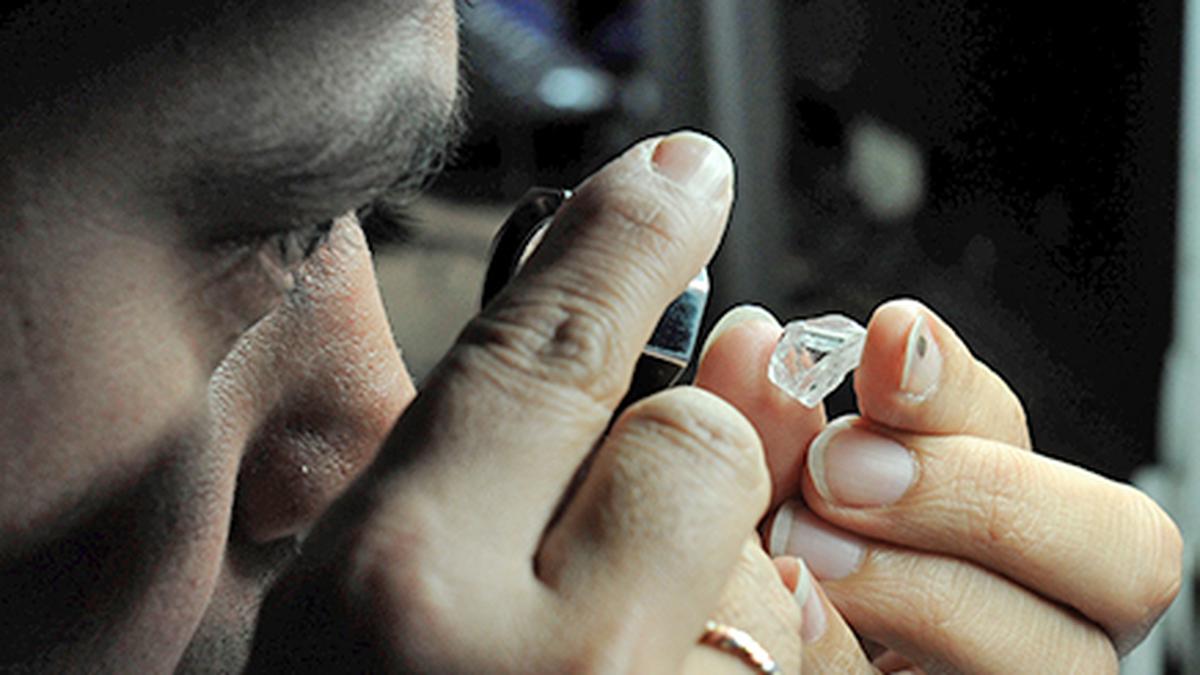 |
|
The recent decision by the United States to increase import duties on diamonds from India has sent ripples of concern throughout Gujarat’s diamond sector. This region, which handles approximately 90% of India's natural diamond cutting and polishing, is already struggling with the aftermath of the Russia-Ukraine conflict and the rising popularity of lab-grown diamonds. The imposition of a 25% duty, compounded by an additional tariff of 25% effective from August 27, escalates the total import levy to a staggering 50%. This hike, a direct consequence of policies enacted by the U.S. administration, has fueled anxieties among Indian exporters, who fear the rate is commercially unviable for long-term trade. They project that the increased costs could severely diminish demand in the U.S. market, traditionally a significant buyer of Indian gems and jewellery. The timing of this levy is particularly problematic, occurring when the industry is still navigating a period of economic volatility. The combination of geopolitical tensions impacting supply chains, the increased competition from synthetic diamonds, and now, prohibitively high import tariffs, creates a perfect storm for the Indian diamond industry. However, amidst the gloom, a sense of resilience and optimism persists. Industry leaders like Jagdish Khunt, president of the Surat Diamond Association, argue that the U.S. has no practical alternative to India when it comes to loose and jewellery diamonds. According to Khunt, this import duty escalation is merely a temporary hurdle. He believes that the tariffs will ultimately push prices up for consumers in the U.S., who will have to bear the additional cost to acquire Indian diamonds. He contends that the superior quality and craftsmanship of Indian diamonds makes sourcing from India unavoidable for many U.S. buyers. He highlights that Indian artisans possess unparalleled skills and expertise in diamond cutting and polishing, which translates to higher quality finished products. This superiority, according to Khunt, will give Indian diamonds an edge over other sources, even with the elevated prices. The U.S. market constitutes a substantial portion of India’s gem and jewellery exports, representing more than 30% of total overseas sales. This significant reliance on the U.S. market amplifies the impact of the tariff increase, potentially leading to further job losses in Gujarat. Trade bodies in the region estimate that over one lakh diamond workers have lost their jobs since April, underscoring the severity of the current economic pressures. The Gujarat government has initiated a relief scheme designed to alleviate the hardships faced by diamond artisans and small businesses affected by the global economic slowdown. This program provides financial assistance to affected families, offering ₹13,500 per child to support their livelihood. More than one lakh former diamond workers have applied for aid under this scheme, demonstrating the widespread impact of the sector's downturn. Khunt reiterates his conviction that the U.S. market will eventually stabilize, as Americans have a longstanding preference for diamonds similar to the Indian affinity for gold. He believes that American consumers are likely to continue purchasing diamonds even if prices rise, due to the inherent cultural significance and perceived value of diamonds. He anticipates that the market will rebound leading up to the Christmas and New Year holidays, with new orders expected to flow in as retailers restock their inventories for the peak selling season. He emphasizes that over 7.5 lakh artisans are employed in approximately 3,500 diamond processing units of varying sizes across the region. This large workforce is critical to the industry, and efforts must be focused on sustaining this workforce during these challenging times. Data from the Gem and Jewellery Export Promotion Council (GJEPC) reveals that India exported cut and polished diamonds worth $4.8 billion to the U.S. in the fiscal year 2024-25. This figure represents over one-third of India's total diamond exports, which totaled $13.2 billion for the year. These numbers further highlight the importance of the U.S. market to the Indian diamond industry. The GJEPC also notes a significant decrease in India's rough diamond imports, which fell from $14.26 billion in the previous fiscal year to $9.52 billion in 2024-25. This decline may be indicative of the challenges faced by the sector, including reduced demand and price volatility. Babu Vaghani, president of the Lab-Grown Diamonds Association, echoes Khunt's optimism, viewing the current situation as a transient crisis. He stresses the importance of persevering through these difficulties until Diwali, even if it requires operating on tighter profit margins. His primary concern is safeguarding the livelihoods of the lakhs of individuals who depend on the diamond industry for their income. Vaghani underscores the significant role that women play in the diamond polishing sector, particularly in rural areas surrounding Surat, such as Bhavnagar, Botad, and Mehsana. He notes that women comprise a substantial portion of the workforce, and their contributions are essential to the industry's success. In conclusion, the Indian diamond industry is confronting significant challenges due to the U.S. import duty hike, geopolitical uncertainties, and competition from lab-grown diamonds. However, industry leaders remain confident in the long-term resilience of the sector, emphasizing the superior quality of Indian diamonds, the unwavering demand from U.S. consumers, and the vital role of its skilled workforce. With targeted government support and the industry's inherent adaptability, the Indian diamond sector is expected to navigate these obstacles and emerge stronger in the years to come. The focus on retaining skilled artisans, promoting innovation in diamond processing, and exploring new export markets will be crucial for ensuring the long-term viability and growth of the industry.
Source: U.S. has no alternative to India in diamonds, say industry leaders
